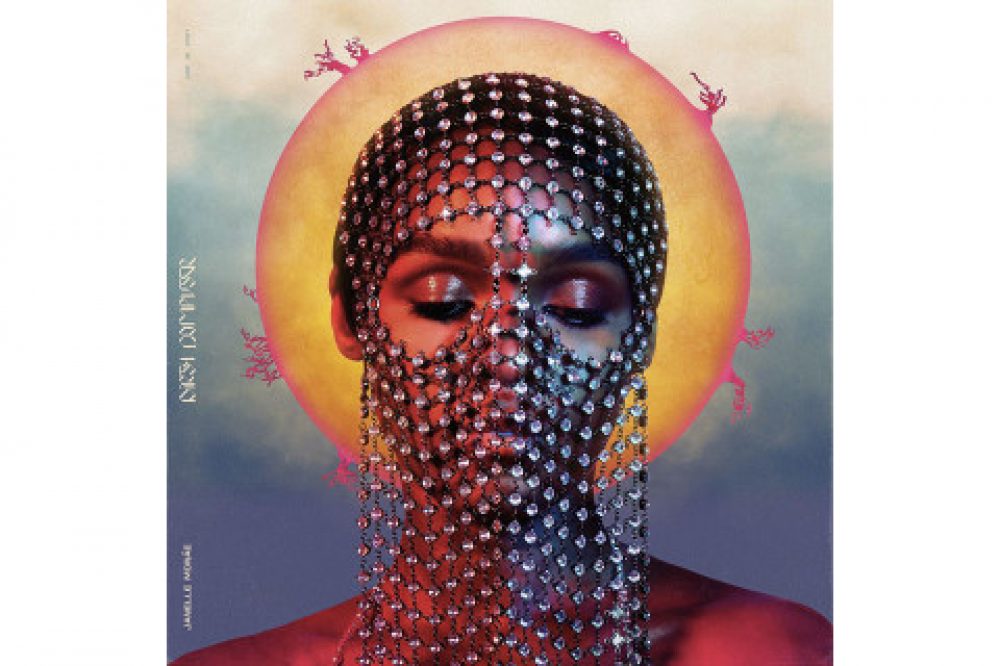Here’s a brief overview of 28 Days Later, feel free to skip down to “the good stuff” if you’ve already seen it.
The Rage! Three white animal rights activists free “chimps” from captivity at the Cambridge Primate Research Center. They accidentally release “Rage,” a cannibalistic “disease” that the chimps have developed in the laboratory, presumably from watching images of human violence on TV. The chimp’s first kill is a white woman.
The Hospital 28 days later… Jim (white) wakes up from a coma to find that the hospital and country have been deserted. He visits a church, where he encounters an infected priest, and narrowly escapes with the help of two survivors: Selena (black) and Mark (white), who show him their hideaway.
The Family Jim visits his family and finds that his parents have committed double suicide. He (stupidly) lights a candle, alerting “the infected” to his presence. Mark gets infected. Selena kills him, immediately.
The Second Family Jim and Selena find a father/daughter duo: Frank and Hannah (both white). Frank convinces everyone to follow a pre-recorded radio broadcast to a settlement which promises salvation (i.e. “the answer to infection”) and the protection of the army.
The Journey They breakdown in a tunnel and narrowly escape a mob of people infected with “Rage,” stock up on free groceries, and stop at a burger shack to refuel. Jim kills his first infected person: a boy. They see “a family” of black and white horses running free. Selena shares pills with Jim so that he can sleep. They give him nightmares. They arrive at the settlement, but it appears to be empty. Frank gets infected by a black crow and Jim tries to follow Selena’s command to “kill him,” but, the soldiers end up killing him in front of everyone by repeatedly shooting him.
The Army Jim and Selena kiss. Major West shows Jim the infected black man they are keeping chained to a leash to “study.” A mob of infected people attacks the settlement, but the soldiers happily (almost giddily) kill them. Corporal Mitchell says Selena won’t need her machete because he will “protect her,” but molests her. Jim tries to “save” her, but is too weak, so Sergeant Farrell steps in. Major West “apologizes” for Mitchell, but tells Jim, privately, that he “promised them women.”
Super Jim Jim tries to escape with Selena and Hannah, but it’s “too late.” Jim and Sergeant Farrell are to be executed, but Jim escapes after Sergeant Farrell is killed. Selena slips Hannah pills to numb her to the rape while they “dress up” for the soldiers. Jim kills one of the soldiers and sets the infected black man free to kill the other soldiers. Hannah hides from the infected black man. Jim gouges Mitchell’s eyes out and makes out with Selena. Hannah hits Jim, thinking he is infected and enables the infected black man to kill Major West before breaking through the gates.
Happily Ever After 28 days later… Jim, Selena, and Hannah are living together peacefully, after Selena revives Jim. All of the infected have died of starvation. They signal a helicopter to rescue them.
Word count: 500
The STRUCTURAL ANALYSIS!
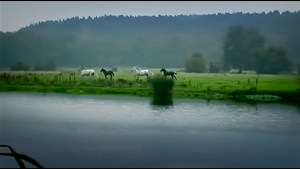
54:30 is one of the few shots in 28 Days Later that does not use a Dutch angle to disorient and disturb the audience. It is filmed straight-on, at a perfectly symmetrical angle, producing an idyllic quality that is accentuated by the soundtrack, scenery, and cinematography.
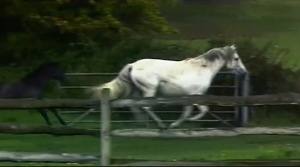
The frame features four horses, interspersed white, black, white, black, with the white horse leading the pack. It is a cutaway shot from the main characters and conflict of the movie: the disease. It is presented as an unadulterated, utopian reprieve from “The Rage” which has consumed the, now staunchly dystopian, society. This rare, “unadulterated” image is reinforced by the stark absence of infected people in the scene/scenery and Frank’s belief that the horses aren’t infected with the disease. Because the landscape hasn’t been touched by “Rage,” it takes on an other-worldly quality in that it seems to lie outside of the movie’s reality/society.
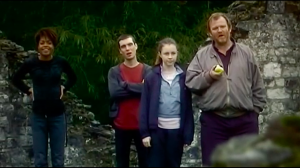
The scene is filmed at eye-level, giving the impression, not only that we are seeing what the protagonists see, but also that there is an equivalence between the multicolored “family” of horses running “free” and the multiracial “family” of survivors seeking freedom from the disease.
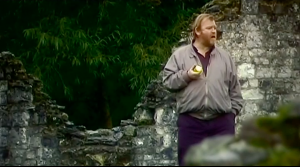
The fact that it is a wide shot highlights the lush, greenery (the grass and trees) which acts as a symbol of tranquility and fertility. Interspersed between cutaways of the horses “frolicking,” we see Frank bite into an apple and hear Serena say “Let’s eat.” These gestures further solidify the utopic quality of the scene by alluding to the ultimate Christian utopia: The Garden of Eden, where Eve bites into an apple (the “forbidden fruit” of knowledge), unleashing the beginning of humanity (i.e. sexual intercourse between men and women).
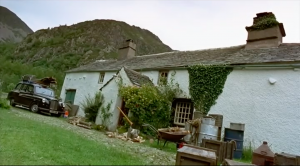
This allusion foreshadows the end-scene where Jim, Serena, and Hannah, an “unorthodox,” (i.e. forbidden) family, are set to repopulate the United Kingdom (like Adam and Eve), redefining the distinctions between moral and immoral, so as to make interracial relationships (at least between white men and black women) morally permissible, even, desirable. The lush, greenery in the first scene is echoed in the end scene, as is the idea of black (Serena) sandwiched between white (Jim and Hannah) in the form of a happy, frolicking, “futuristic” family.
But, oftentimes, these multiracial “utopias” implicitly posit white people (represented by the white horse leading and Jim “saving” the girls) as their leaders, maintaining the old power structure in a “new” iteration: the integrated family. The soundtrack for the horse scene also hints at the implicit whiteness of the interracial dream that is realized at the end of the movie. The song playing in the background is called “In Paradisum,” which literally means “Into Paradise” in Latin, and is typically sung at Requiem Mass (a mass for The Dead). This Christian/Latin undertone points to power asymmetries in the inclusive, integrated family and society that we see played out figuratively (in the first scene) and literally (in the last scene), leaving us with the question: Whose paradise this will be?
Word count: 499
